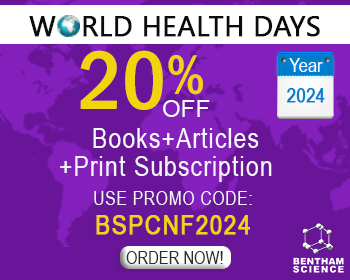Abstract
The World Health Organization (WHO) report from 2014 documented that non-communicable socalled civilization diseases such as cardiovascular disease, chronic respiratory diseases, cancer or type 2 diabetes are responsible for over 50% of all premature deaths in the world. Research carried out over the past 20 years has provided data suggesting that diet is an essential factor influencing the risk of development of these diseases. The increasing knowledge on chemopreventive properties of certain food ingredients, in particular, those of plant origin, opened the discussion on the possibility to use edible plants or their active components in the prevention of these chronic diseases. Health-promoting properties of plant foods are associated with the presence of secondary metabolites that can affect many biological mechanisms of critical importance to the proper functioning of the human organism. Particularly, there have been numerous investigations indicating strong physiological effects of bioactive plant phenols belonging to the flavonoid family. These observations initiated mass production of dietary supplements containing flavonoids commercialized under the name antioxidants, even if their chemical properties did not justify such a term. However, epidemiological studies revealed that isolated bioactive phytochemicals are not as effective as fruits and vegetables containing these substances whereas they are of interest of the functional food industry. In this paper, the critical assessment of reasons for this turn of events has been attempted and the concept of food synergy has been suggested as a future strategy of dietary chemoprevention.
Keywords: Chemoprevention, bioactive phytochemicals, antioxidants, flavonoids, civilization diseases, cancer, food synergy.
[http://dx.doi.org/10.1111/nure.12153] [PMID: 25406801]
[http://dx.doi.org/10.1196/annals.1425.027] [PMID: 18579877]
[http://dx.doi.org/10.2307/2938388]
[http://dx.doi.org/10.1038/oby.2003.179] [PMID: 14627752]
[http://dx.doi.org/10.1161/01.CIR.99.6.779] [PMID: 9989963]
[PMID: 28488692]
[http://dx.doi.org/10.1038/15145] [PMID: 10545959]
[http://dx.doi.org/10.1096/fj.01-0300rev] [PMID: 11772931]
[http://dx.doi.org/10.1038/nrclinonc.2012.120] [PMID: 22850752]
[http://dx.doi.org/10.3109/10715762.2013.779373] [PMID: 23438723]
[http://dx.doi.org/10.3390/ijms161025234] [PMID: 26512646]
[http://dx.doi.org/10.1016/j.vph.2015.03.005] [PMID: 25869516]
[http://dx.doi.org/10.1016/j.bcp.2007.02.014] [PMID: 17382300]
[http://dx.doi.org/10.1021/acs.chemrestox.6b00413] [PMID: 27989132]
[http://dx.doi.org/10.1172/JCI21625] [PMID: 15599400]
[http://dx.doi.org/10.1016/j.redox.2015.01.002] [PMID: 25588755]
[http://dx.doi.org/10.1111/j.1582-4934.2009.00897.x] [PMID: 19754673]
[http://dx.doi.org/10.1016/j.it.2009.03.004] [PMID: 19356981]
[http://dx.doi.org/10.1152/physrev.00029.2006] [PMID: 17237348]
[http://dx.doi.org/10.3390/nu6020466] [PMID: 24473231]
[http://dx.doi.org/10.3390/antiox6040096] [PMID: 29168774]
[http://dx.doi.org/10.1016/j.bbabio.2015.02.012] [PMID: 25701705]
[http://dx.doi.org/10.2337/dc08-s245] [PMID: 18227482]
[PMID: 17519116]
[http://dx.doi.org/10.1152/physrev.00018.2001] [PMID: 11773609]
[http://dx.doi.org/10.1016/S0092-8674(00)81683-9] [PMID: 10647931]
[http://dx.doi.org/10.1016/j.cell.2011.02.013] [PMID: 21376230]
[http://dx.doi.org/10.1038/nrc1189] [PMID: 14570043]
[http://dx.doi.org/10.1023/B:MCBI.0000049134.69131.89] [PMID: 15646026]
[http://dx.doi.org/10.1016/j.cbi.2005.12.009] [PMID: 16430879]
[http://dx.doi.org/10.1016/j.biocel.2006.07.001] [PMID: 16978905]
[http://dx.doi.org/10.1042/BST0351147] [PMID: 17956298]
[http://dx.doi.org/10.1016/j.cell.2013.05.039] [PMID: 23746838]
[http://dx.doi.org/10.1002/bjs.10053] [PMID: 26771470]
[PMID: 23675073]
[http://dx.doi.org/10.1016/j.freeradbiomed.2010.03.020] [PMID: 20353819]
[http://dx.doi.org/10.1016/j.cub.2014.03.034] [PMID: 24845678]
[PMID: 1127728]
[http://dx.doi.org/10.1093/oxfordjournals.aje.a112810] [PMID: 582494]
[PMID: 416908]
[http://dx.doi.org/10.2105/AJPH.79.8.1016] [PMID: 2751016]
[http://dx.doi.org/10.1093/jnci/81.15.1158] [PMID: 2545891]
[http://dx.doi.org/10.1093/oxfordjournals.aje.a113403] [PMID: 7102657]
[PMID: 2253198]
[http://dx.doi.org/10.1038/bjc.1989.18] [PMID: 2757927]
[PMID: 8425185]
[http://dx.doi.org/10.1016/S0002-8223(96)00273-8] [PMID: 8841165]
[http://dx.doi.org/10.1093/jnci/djm065] [PMID: 17652276]
[http://dx.doi.org/10.1161/CIRCULATIONAHA.112.122408] [PMID: 23319811]
[http://dx.doi.org/10.3945/ajcn.110.006783] [PMID: 21106916]
[http://dx.doi.org/10.3945/ajcn.112.042036] [PMID: 22914551]
[http://dx.doi.org/10.3945/ajcn.111.016634] [PMID: 22218162]
[http://dx.doi.org/10.3390/nu6093474] [PMID: 25192027]
[PMID: 1277177]
[http://dx.doi.org/10.1038/nrc844] [PMID: 12094240]
[http://dx.doi.org/10.1016/j.tips.2005.04.004] [PMID: 15925707]
[http://dx.doi.org/10.1016/S0027-5107(01)00165-8] [PMID: 11506795]
[http://dx.doi.org/10.1207/S15327914NC3701_1] [PMID: 10965514]
[PMID: 19502676]
[http://dx.doi.org/10.1093/jnci/djq072] [PMID: 20371762]
[http://dx.doi.org/10.3945/ajcn.2008.26722] [PMID: 19056579]
[http://dx.doi.org/10.1093/jnci/djh296] [PMID: 15523086]
[http://dx.doi.org/10.1016/j.jnutbio.2005.01.006] [PMID: 15936648]
[http://dx.doi.org/10.1038/bjc.1992.336] [PMID: 1419605]
[http://dx.doi.org/10.1186/1752-153X-7-53] [PMID: 23497653]
[http://dx.doi.org/10.1016/j.fjps.2015.11.001]
[http://dx.doi.org/10.3390/md12031641] [PMID: 24663117]
[http://dx.doi.org/10.3390/md9061056] [PMID: 21747748]
[http://dx.doi.org/10.1093/carcin/bgu063] [PMID: 24618374]
[http://dx.doi.org/10.1073/pnas.051632198] [PMID: 11248091]
[http://dx.doi.org/10.1016/j.canlet.2004.09.042] [PMID: 15914268]
[http://dx.doi.org/10.1002/bies.20359] [PMID: 16435293]
[http://dx.doi.org/10.1016/j.bcp.2012.11.016] [PMID: 23219527]
[http://dx.doi.org/10.1002/med.21257] [PMID: 22549716]
[http://dx.doi.org/10.1128/MCB.22.9.2883-2892.2002] [PMID: 11940647]
[http://dx.doi.org/10.1042/bj20030754] [PMID: 12816537]
[http://dx.doi.org/10.1146/annurev.pharmtox.46.120604.141046] [PMID: 16968214]
[http://dx.doi.org/10.1016/j.freeradbiomed.2009.07.035] [PMID: 19666107]
[http://dx.doi.org/10.1016/j.taap.2009.06.009] [PMID: 19538984]
[http://dx.doi.org/10.1016/j.ejca.2005.06.009] [PMID: 16084717]
[http://dx.doi.org/10.1021/jf801791d] [PMID: 18821770]
[http://dx.doi.org/10.1016/S0140-6736(80)90169-5] [PMID: 6107496]
[http://dx.doi.org/10.1056/NEJM199404143301501] [PMID: 8127329]
[http://dx.doi.org/10.1056/NEJM199605023341802] [PMID: 8602180]
[http://dx.doi.org/10.1001/jama.297.21.2408] [PMID: 17551134]
[http://dx.doi.org/10.1001/jama.2008.862] [PMID: 19066368]
[http://dx.doi.org/10.1001/jama.1996.03540240035027] [PMID: 8971064]
[http://dx.doi.org/10.1093/ajcn/78.3.508S] [PMID: 12936941]
[http://dx.doi.org/10.1093/jnci/djg081] [PMID: 14600090]
[http://dx.doi.org/10.1016/j.bbadis.2005.02.004] [PMID: 15949687]
[http://dx.doi.org/10.2119/molmed.2012.00174] [PMID: 22952060]
[http://dx.doi.org/10.1016/j.neo.2014.07.012] [PMID: 25246272]
[http://dx.doi.org/10.1021/jf058010c] [PMID: 15769178]
[http://dx.doi.org/10.1093/jn/134.12.3479S] [PMID: 15570057]
[http://dx.doi.org/10.1007/s12031-014-0472-7] [PMID: 25645682]
[http://dx.doi.org/10.1007/BF03391648]
[http://dx.doi.org/10.1038/srep41215] [PMID: 28117410]
[http://dx.doi.org/10.1080/09537100120111540] [PMID: 11897042]
[http://dx.doi.org/10.1016/j.devcel.2018.09.001] [PMID: 30269951]
[PMID: 12055701]
[http://dx.doi.org/10.1001/archinte.1992.00400190054010] [PMID: 1627021]
[http://dx.doi.org/10.1093/ajcn/70.3.451s] [PMID: 10479217]
[http://dx.doi.org/10.1016/j.redox.2018.05.005] [PMID: 29803149]
[http://dx.doi.org/10.1021/jf0511042] [PMID: 16248545]
[http://dx.doi.org/10.1007/s00394-008-0761-4] [PMID: 19043659]
[http://dx.doi.org/10.1021/jf801744r] [PMID: 18680371]
[PMID: 20041424]
[http://dx.doi.org/10.1021/acs.jnatprod.8b00168] [PMID: 30372064]
[http://dx.doi.org/10.1021/jf5011287] [PMID: 24980214]
[http://dx.doi.org/10.1021/acs.jafc.8b05917] [PMID: 30406649]
[http://dx.doi.org/10.1111/1541-4337.12136]
[http://dx.doi.org/10.3390/ijms20020307] [PMID: 30646518]
[http://dx.doi.org/10.1016/j.jff.2016.09.009]
[http://dx.doi.org/10.3390/md9030319] [PMID: 21556162]
[http://dx.doi.org/10.1055/s-2006-957450] [PMID: 9619120]
[PMID: 20516541]
[http://dx.doi.org/10.1002/bdd.2049] [PMID: 27882569]
[http://dx.doi.org/10.1093/carcin/19.3.419] [PMID: 9525275]
[http://dx.doi.org/10.1074/jbc.M314331200] [PMID: 15044435]
[http://dx.doi.org/10.1002/mnfr.200500125] [PMID: 16404707]
[http://dx.doi.org/10.1002/mnfr.201100117] [PMID: 21714124]
[http://dx.doi.org/10.1016/j.foodchem.2014.01.082] [PMID: 24679758]
[http://dx.doi.org/10.3390/antiox5020018] [PMID: 27338486]
[http://dx.doi.org/10.1155/2014/365738] [PMID: 24575407]
[http://dx.doi.org/10.1002/ejlt.200800021]
[http://dx.doi.org/10.1016/S1383-5718(98)00151-X] [PMID: 9838070]
[http://dx.doi.org/10.1016/j.foodres.2009.08.016] [PMID: 20161530]
[http://dx.doi.org/10.1080/01635581.2013.749925] [PMID: 23441614]
[http://dx.doi.org/10.1016/j.foodchem.2010.03.028]
[http://dx.doi.org/10.1021/jf0712604] [PMID: 17715885]
[http://dx.doi.org/10.1177/153537020222701003] [PMID: 12424325]
[http://dx.doi.org/10.1158/0008-5472.CAN-06-3462] [PMID: 17213256]
[http://dx.doi.org/10.1021/jf026189a] [PMID: 12744661]
[http://dx.doi.org/10.1021/acs.jafc.8b05272] [PMID: 30411897]
[http://dx.doi.org/10.3945/jn.113.188466] [PMID: 24500939]
[http://dx.doi.org/10.1089/jmf.2014.0037] [PMID: 25271471]
[http://dx.doi.org/10.3748/wjg.v20.i45.17029] [PMID: 25493015]
[http://dx.doi.org/10.1016/j.jnutbio.2005.01.006] [PMID: 15936648]
[http://dx.doi.org/10.1038/srep41215] [PMID: 28117410]
[http://dx.doi.org/10.3945/ajcn.2009.26736B] [PMID: 19279083]
[http://dx.doi.org/10.1080/09637486.2018.1529148] [PMID: 30632828]


























